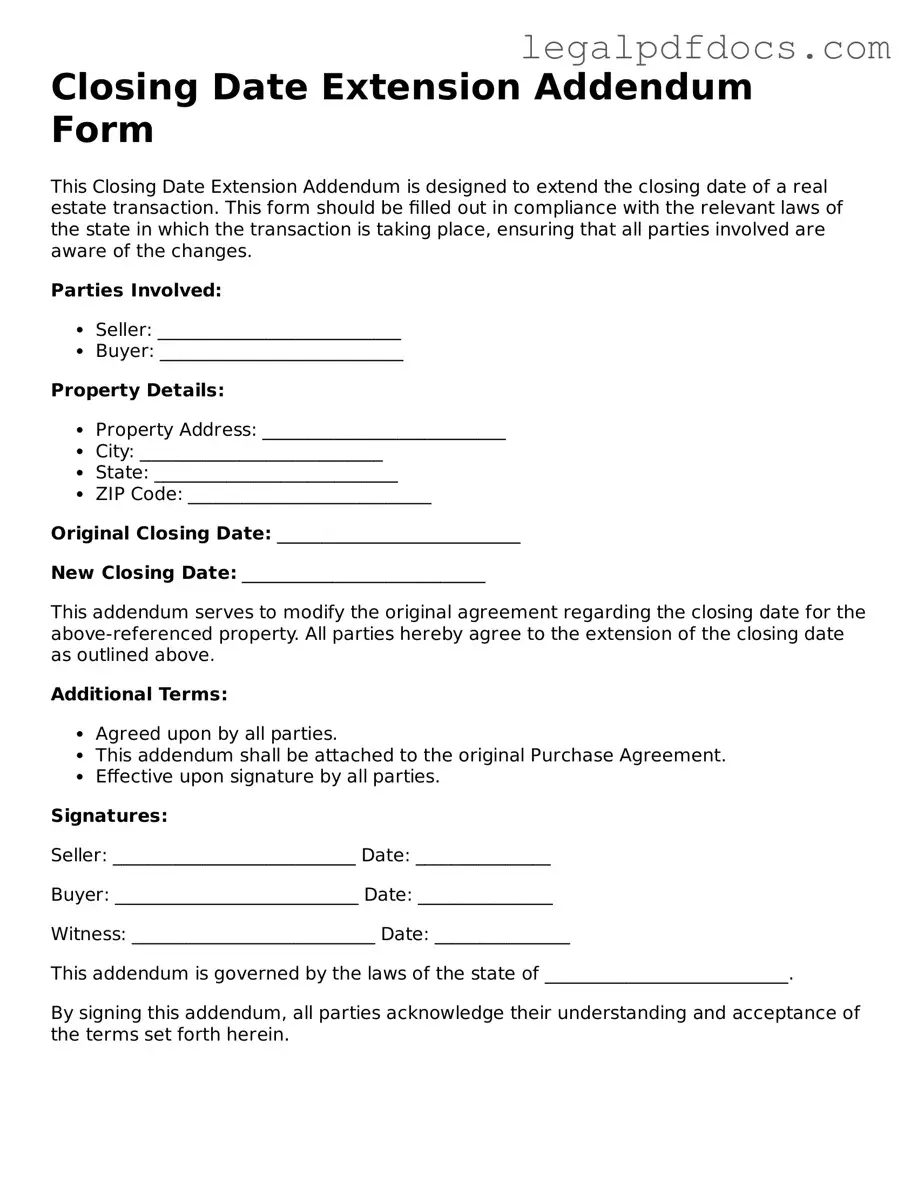Closing Date Extension Addendum Form Template
The Closing Date Extension Addendum Form is a document used to officially extend the closing date of a real estate transaction. This form is essential for parties needing additional time to finalize the sale, ensuring that all necessary conditions are met. Understanding how to properly complete this form can help streamline the process and avoid potential complications.
To get started, fill out the form by clicking the button below.
Open Closing Date Extension Addendum Form Editor Here
